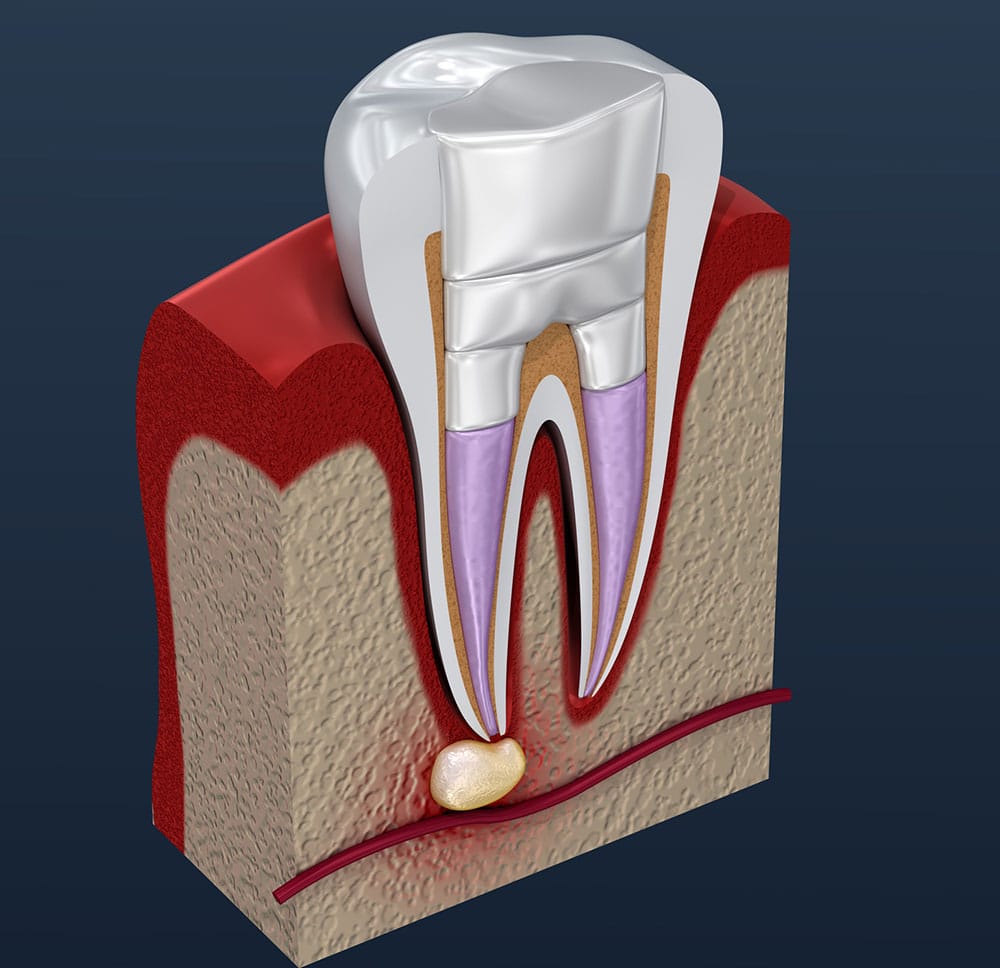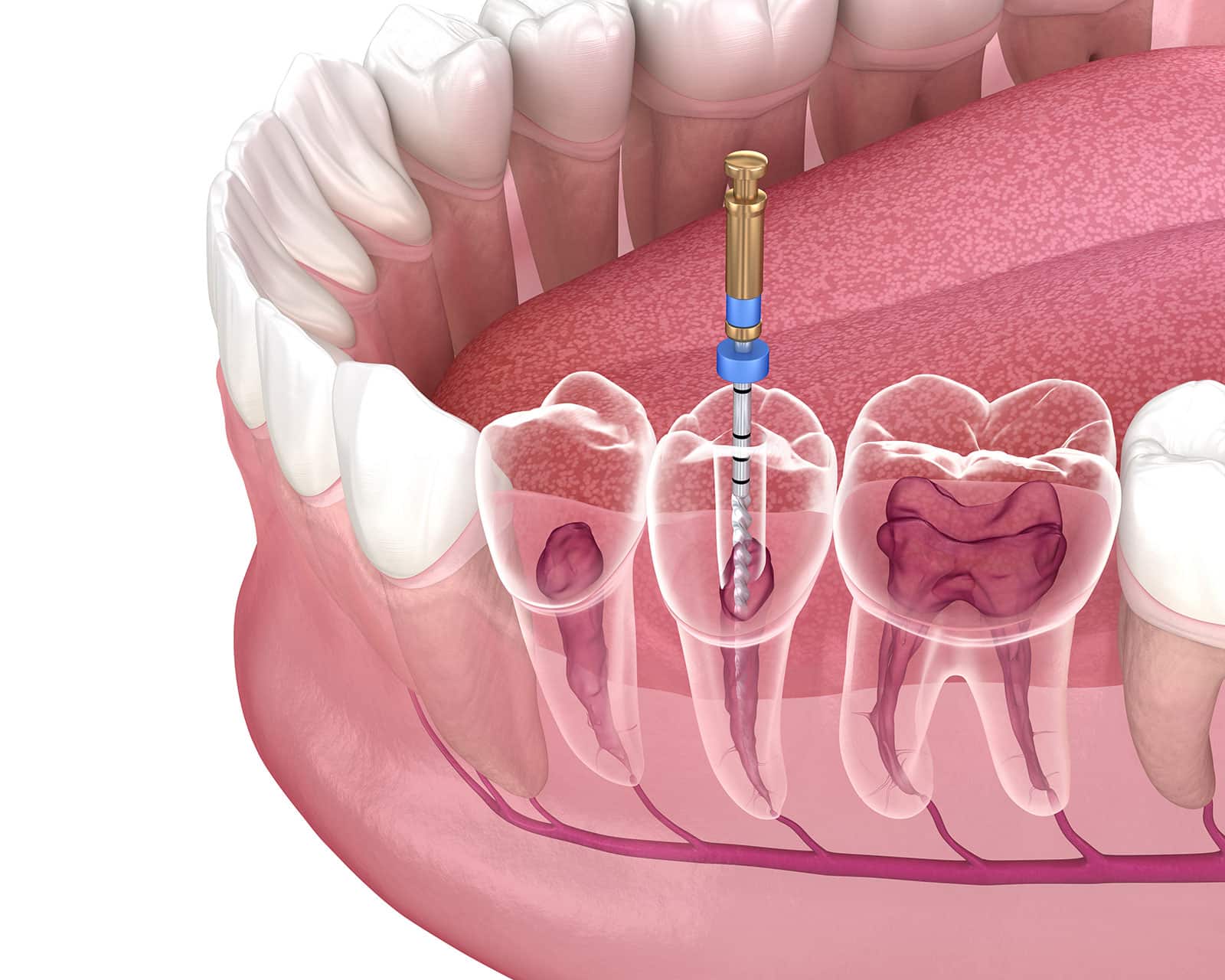Root Canal Treatment
Schedule a Complimentary Consultation
Schedule Your Appointment Today Call Now: (805) 526-1000Endodontic or root canal treatment is needed when the pulp is inflamed or infected.
The causes for this may be different: deep tooth decay, leaky fillings, crack or chip in the tooth, injury (even if there is no visible damage in the tooth) also sometimes a condition known as necrotic tooth. Gum diseases can also accelerate root canal problems. Timely treatment helps save the aesthetics of your smile as well as normal biting force and sensation. The root canal treatment is similar to a routine filling procedure and is usually performed in one-three visits, depending on your circumstances.
Follow Us On Instagram To See Before and Afters
@elitedentistryofsimivalley
When Do You Need Root Canal Treatment?
Before starting the treatment, you should have a thorough dental examination with X-rays.
Root canal treatment may be necessary only when a pulp is damaged by bacterial infection. Some symptoms of pulp infection include:
- Pain and increased sensitivity when drinking or eating cold/hot
- Pain when chewing or biting
- A loose tooth
- Gum swelling near the area of infected tooth
- Oozing from the infected tooth
- Necrotic tooth leading to an abscess

Frequently Asked Questions
An alternative way to stop infection is tooth extraction. Though some people prefer having a tooth out, we recommend keeping as many natural teeth as possible. Tooth removal should be the last extreme measure. Removing the tooth means the gap that should be replaced by an artificial tooth. If left untreated, the tooth pulp dies and the symptoms usually disappear. It may seem that your tooth is healed, however, the bacteria continue spreading in your mouth. Over the time, pus can build up at the root tip creating an abscess. An abscess, in turn, may destroy the bone that surrounds the infected tooth. The pulp can’t heal by itself. Delaying the treatment can make it impossible for your dentist to save your tooth.
Like any other dental procedure, a root canal treatment poses some risks. Potential complications may need additional treatment. However, these are rare occasions. Root canal treatment has a high success rate: 9 of 10 treated teeth last up to 10 years or longer after the procedure, if the treatment is done by root canal specialist aka Endodontist. All of our root canals are done by our in office root canal specialist (endodontist). Pain and infection may happen over some time after the treatment. Usually, it happens due to deep decay, injury or cracked filling. In case the infection comes back, the treatment may be repeated.
In the past, a root-filled tooth usually became darker after treatment. Today, with new techniques, the restored tooth looks cosmetically pleasant and functions like any other teeth. In case of any minor discoloration, a natural tooth appearance may be easily restored with the help of several procedures. As a dead tooth is more fragile, you will need a good ceramic crown to provide support and strength to your tooth.
How Root Canal Treatment Is Performed?

- Getting Started
In order to treat infection in the root canal, the bacteria have to be removed. This procedure is performed under the local anesthetic, so it won’t be painful and not more unpleasant than having a simple filling. First, the specialist will remove decay and make a small hole in the tooth crown to get access to the pulp with an assist of a special microscope for very conservative access to the tooth. Then, the infected pulp will be removed.
- Cleaning
The pulp chamber and root canals need to be carefully cleaned of infection. The tooth can be left open to drain for some days. If the infection has already spread, you may need to take prescribed antibiotics. In case the treatment requires several appointments, the dentist will place you a temporary filling to protect the tooth. Your task is to avoid biting or chewing on this tooth until the whole treatment is completed.
- Filling
When your tooth is free of infection, it is time to fill the root canals and pulp chamber. In most cases, the inflamed area near the tooth heals naturally. If you had a temporary filling, it will be removed to allow access to the inside of the tooth. A special dental paste, a rubber compound, and an adhesive filling are used to fill the tooth.
- Restoring
The last stage of root canal treatment is tooth restoration. Usually, an infected tooth has a large filling and has to be protected from future damages. A crown is placed on the tooth, sometimes supported by a metal post.
Root Canal Aftercare
It is important to look after your teeth during the recovery stage. Avoid biting on hard foods and consuming drinks and food of extreme temperatures. First weeks after treatment, the restored tooth may be tender to cold and hot. Take over-the-counter pain-killers to ease the pain and discomfort. Severe pain and swelling are not common aftereffects. If they happen, immediately call your Simi Valley root canal dentist. After root canal treatment you are still susceptible to tooth decay and gum diseases. It is possible to prevent the need for further root canal treatment by keeping proper oral hygiene, limiting sugary food and beverages in your diet, giving up smoking if you smoke. With good home care, the restoration can last a lifetime.